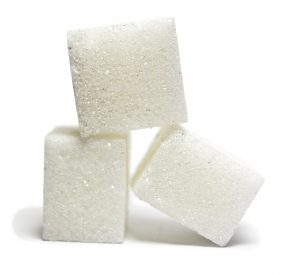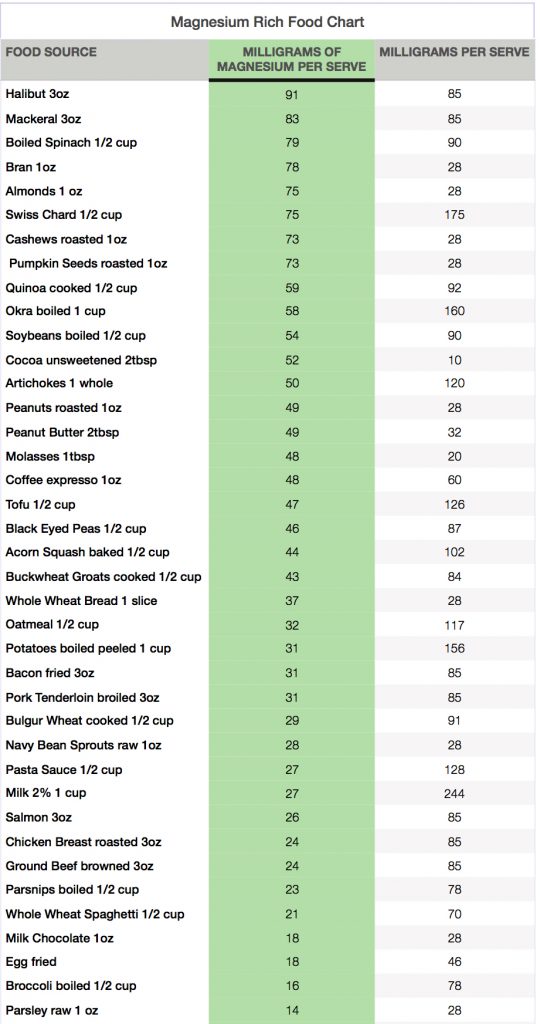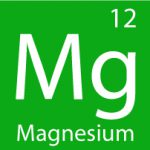If you find out your magnesium levels are low and are suffering some symptoms such as insomnia, muscle cramping or fatigue,
you may want to look at your diet and risk factors to examine what things you can improve!
The magnesium rich food chart below will help you to make informed choices with a list of popular foods and the magnesium content therein.
To gain a nutrient rich diet with the recommended daily intake of 320mg for women or 420mg for men (NIH), you need to select more foods from the top of the chart.
For a full list of magnesium deficiency symptoms click here.
If you are exposed to any of the risk factors which lead to greater depletion of body magnesium,  you will have to increase your magnesium intake to replace the reduced stores and decrease the detrimental effects that may be caused by magnesium deficiency.
you will have to increase your magnesium intake to replace the reduced stores and decrease the detrimental effects that may be caused by magnesium deficiency.
The risk factors for magnesium deficiency include:
-
stress – physical stress such as surgery or trauma, or mental stress
-
kidney or liver disease
-
digestive absorption issues such as irritable bowel syndrome or Crohn’s disease
-
diet high in refined sugars
-
high intake of caffeine or alcohol
-
pregnancy
-
some medications such as cardiac drugs and oral contraceptives
-
calcium supplements
Mineral supplementation should only be used as a complementary therapy to an already balanced diet high in vitamins and minerals.
Have a look at the best magnesium supplements listed here.
Reduction in Magnesium due to Farming
There are many foods that contain good amounts of magnesium however they are not as good as they used to be. Modern farming practices have stripped the soils of magnesium which has resulted in a huge drop in the magnesium content of many of the fruit and vegetables that we eat.
Over 50 years between 1940 and 1990, with the increase in high production and hyper-industrialised farming techniques, the declines were evident. The magnesium content of vegetables declined by 24%, fruit lost 17%, meat magnesium was reduced by 15% while the content in cheese lost 26%!
(Thomas, D. The Mineral Depletion of Foods Available to us as a Nation (1940-2002). Nutrition and Health. 2007;19:21–55.)
During this time, farming practices have evolved and the introduction of high amounts of nitrogen containing fertilisers for example creates higher yielding produce with lower nutritional value.
Following a magnesium rich food chart will help to increase your daily intake up to the required amount of 320-420mg daily.
You cannot have too much magnesium in your diet. Your body naturally uptakes that which it needs and excretes the rest so it is safe to add to your diet with other forms of magnesium supplements as long as you don’t exceed the advised maximum dose on these products.
Reduction in Magnesium due to Food Processing
 Food is much more processed than it ever used to be and it is an unfortunate fact that much of the good magnesium containing parts of food are actually removed during processing. The making of white flour for example removes around 80% of the grains’ original magnesium content by eliminating the skins and shells. The refining of oils and sugars also strips all of their magnesium content all the way to zero.
Food is much more processed than it ever used to be and it is an unfortunate fact that much of the good magnesium containing parts of food are actually removed during processing. The making of white flour for example removes around 80% of the grains’ original magnesium content by eliminating the skins and shells. The refining of oils and sugars also strips all of their magnesium content all the way to zero.
Swapping out your white refined flours, sugars, and oils for the brown versions is a great way to start regaining some of your lost magnesium.
See the magnesium rich food chart below for details.
Reduction in Magnesium due to Convenience
The increase in fast food and take out in relation to our busy lives combined with the reduced magnesium content of food due to farming and processing has resulted in 68% of Americans not getting the recommended daily required amount of magnesium. (wikipedia)
Examine your diet and lifestyle and it is possible to make small changes which will have drastic positive effects on your health.
A diet rich in whole grains, green leafy vegetables, nuts and beans contain not only your highest amounts of magnesium but are also rich in other vitamins as well.
Magnesium Rich Food Chart – The Top 40 Foods
(Source www.ars.usda.gov)
Calculate
Have a close look at the magnesium rich food chart above and add up the amount of magnesium you are getting from your food today. If your total falls short of the recommended daily amount of 300mg for women or 400mg for men, then your body’s magnesium needs are not being met and your diet will need added magnesium in the form of supplements.
Find out what magnesium does in the body and what makes it so important here.
Comment
Please leave a comment below about your own experience with magnesium.


Permalink //
I love your site! I am all about eating healthy and living an active lifestyle. I have always been interested in what each vitamin and mineral does for our health. I had no idea how important magnesium is for our bodies! I am bookmarking you site now for future reference. Thank you!
Permalink //
Hi Rachel thanks so much, I hope you are getting enough magnesium!
Permalink //
What a great post this is. I had no idea that modern farming led to a reduced vitamin content. How sad is that! Those are quite high percentage losses! I love the chart showing the amount of magnesium in each serving. I need to show this to my mother-in-law, who has low magnesium. Thank you for this informative post.
Permalink //
You are welcome Marie!
If your mother-in-law needs further advice on magnesium supplements she can have a look here:
Best Magnesium Supplements
Or email me on info@whatismagnesiumdeficiency.com
Best Wishes, Kristine G
Permalink //
What a great post this is. I had no idea that modern farming led to a reduced vitamin content. How sad is that! Those are quite high percentage losses! I love the chart showing the amount of magnesium in each serving. I need to show this to my mother-in-law, who has low magnesium. Thank you for this informative post.
Permalink //
You raise a good point about the reduction of magnesium in foods due to modern farming. I have long thought that the old advice that you can get all your nutrients from a balanced diet was no longer true. Also, not many people actually eat a balanced diet anyway. People tend to have favorite foods and eat a lot of convenience foods too. It’s good to see almonds and cashews on the list of foods rich in magnesium, though, because they are delicious.
Permalink //
You are exactly right Marcus. Too many people do not think about what goes into their bodies which leads to chronic health problems later in life.
Unfortunately healthy eating alone may not be good enough to get all your magnesium anyway but it certainly helps.
Thanks for your comments, Kristine
Permalink //
upon entering this site it was obvious that this a not often discussed topic as i have found when i talk to people about it.most dont realize it can help with stress and high blood pressure.the magnesium deficiency page is interesting and informative.overall i found to be a good site,clean and fresh looking.
Permalink //
Hello and thankyou for your comment!
Regards, Kristine
Permalink //
Being able to look at a chart of some of the top foods for supplying magnesium is an excellent idea. It is a lot easier to try and calculate roughly how much magnesium I’d be getting from the foods I choose to eat.
This chart makes figuring out what I need to do much easier once I tally the amounts.
Considering how your body deals with magnesium would it be a good idea to take a supplement each day just in case.
Permalink //
Out of interest Travis, how did you go with the tally?
You need 420mg per day of magnesium to maintain normal function, and even more if your body is using excess magnesium by being under stress, or on medications.
I recommend a daily supplement for optimum health.
Thanks for stopping by, Kristine G
Permalink //
Thank you for the informative read on the importance of magnesium for the body. I eat pretty well (I have many of the food items listed on the chart on a regular basis, including fish) so I think I’m fine when it comes to magnesium levels. You never know though — it’s very easy to be deficient in certain nutrients and go years without realizing it.
Permalink //
That’s very true Paul.
Take a look at some of the symptoms of magnesium deficiency to see if you notice any of these.
Best of luck, Kristine
Permalink //
If you are magnesium deficient it can lead to muscle cramping,fatigue, and insomnia. And there are foods that can help increase your magnesium to their proper levels. The food we eat today isn’t as high in magnesium as it was say in the 1940’s, because magnesium has been stripped from the soils by big Agra. According to Nutrition and Health in 2007 the magnesium levels in our veggies went down 24%, it went down 26% in our cheese, it went down 15% in our meat and 17% in our fruit, all because of high-production farming. Farming practices have become all about higher yields and less about nutritional value. You can’t have too much magnesium in your diet. And it can be supplemented with a mineral vitamin supplement, but that should not be your only source of magnesium. You should be eating 320-420 mg of magnesium a day. Changing your diet to include beans, whole grains, nuts, and dark green leafy vegetables will not only increase your magnesium levels but will also increase your levels of other important vitamins and minerals as well. Nuts are also a great source of protein, but they are also a great source of good fats that we need. And dark green leafy veggies bring oxygen into our bodies, give us all kinds of vitamins, and trace minerals, and help us with digestion.
The things highest in magnesium are roasted pumpkin seeds, roasted cashews, swiss chard, almonds, bran, cooked spinach, mackerel, and halibut. But that is by no means the only things you can eat that have magnesium in it. Those are just what have the highest amounts of magnesium. There is also quinoa, okra, peanuts and peanut butter, unsweetened cocoa, artichokes, molasses, tofu, acorn squash, oatmeal, whole wheat bread, 2% milk, Salmon, navy bean sprouts, pork tenderloin, chicken breast, pasta sauce, whole grain pasta, and peeled boiled potatoes, among others.
We need magnesium to help keep our bones strong, keep our heart muscles beating smoothly and regularly, regulating our blood pressure, keeping our electrolytes balanced, keeping our mind and muscles relaxed, making sure our digestive system is running smoothly, and giving us energy so we aren’t tired and lethargic all the time. So magnesium really does a lot for us. And it isn’t something that our body provides for us, it is something that we have to give our bodies each and every day.
Permalink //
Yes, this is all very true. Thanks for reading.
Regards, Kristine
Permalink //
This looks like excellent advice for someone concerned about their magnesium levels. The chart you provide is really helpful. I love how you take the natural approach to healing. I personally believe that food is the best medicine.
I added up my magnesium for the day and I think I reached the recommended amount. I’m curious about some of the other foods I’ve eaten today, but are not on the list. Do you have a good source where I can look up specific foods?
Thanks!
Candace
Permalink //
Hi Candace!
Check out the NIH website here for further details on magnesium containing foods.
Foods such as bananas, avocados and soy milk are also great sources of magnesium.
Thanks for stopping by,
Kristine G
Permalink //
It’s great to see a chart for what it takes to get the proper amount of magnesium from our diets. I would have to say that in most cases it would be hard to get the correct amount of vitamins each day, and it would most likely be better to take a high-quality supplement every day to play it safe.
What are your thoughts about taking a supplement daily regardless of your diet?
Permalink //
Hi Travis, thanks for stopping by.
I believe that it is very difficult to consistently gain the required amount of magnesium, 320mg for women and 420mg for men daily from your diet alone.
Personally I consume a nutrient and mineral dense diet and yet continue to find great benefit in taking a high quality magnesium supplement regularly.
If you are otherwise healthy and have no co-morbidities, then it your body is able to easily regulate the amount of magnesium absorbed thereby preventing any systemic overdose. Excess magnesium is excreted via the bowel and kidneys.
Hope this helps!
Regards, Kristine G
Permalink //
Thanks for writing this article, I found it to be very helpful. I’ve been trying to isolate the cause of my fatigue, I never would have attributed it magnesium deficiency, but now I suspect that is the likely cause.
Great review, and great site, keep up the good work! You have great presentation, and a fabulous selection of pictures!
Permalink //
Hi Joshy,
Thanks for stopping by!
I hope that if magnesium is the source of your fatigue, you are able to treat it before it turns into something serious. For me, using a supplement before bed helps me to sleep much better than I ever have before so I wake up feeling and refreshed and full of energy.
Check out this recent post on magnesium and its relationship with energy!
Kind regards, Kristine G